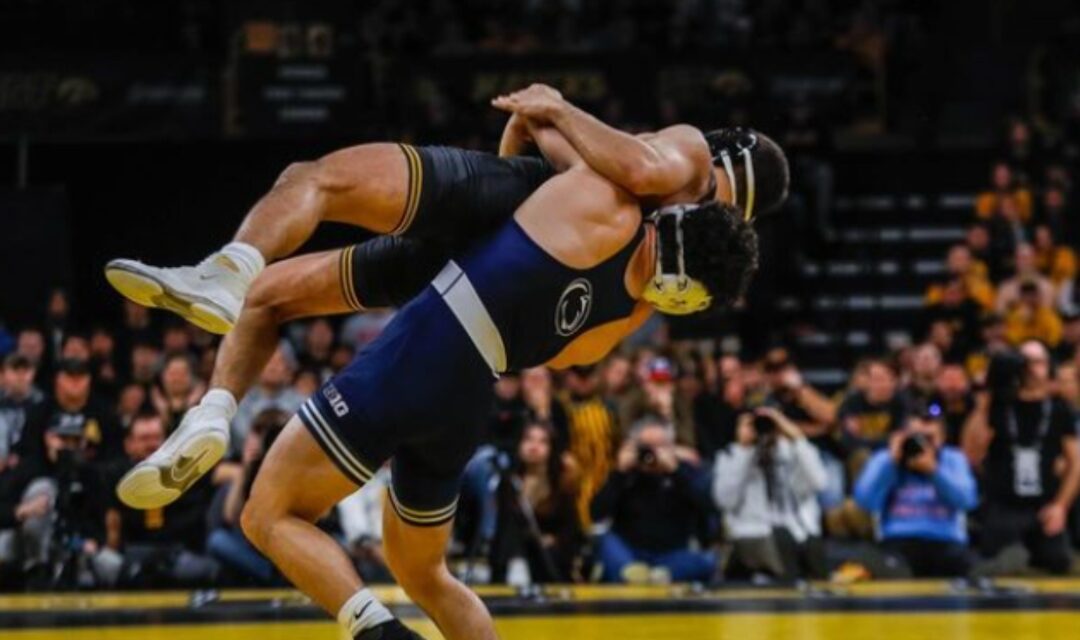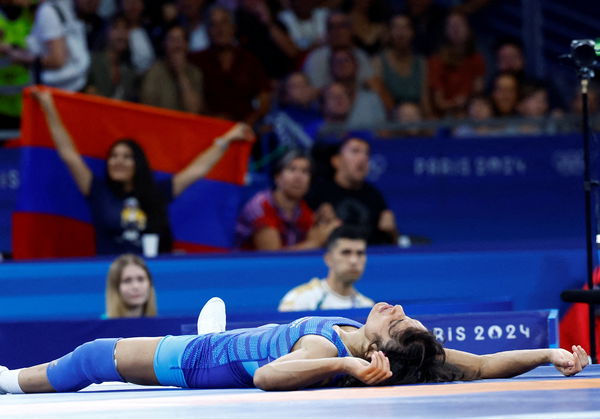
Imago
Credits: X, Penn State Wrestling

Imago
Credits: X, Penn State Wrestling
It was that time of year again—the Super 32 tournament in Greensboro, NC! This event was like the unofficial kickoff to the high school wrestling season, and the pressure was really on for the young athletes. Nine wrestlers from Centre County took part, and there were some new scoring rules in play this time around.
Watch What’s Trending Now!
We just heard that three Connecticut wrestlers brought home medals from the Super 32 Challenge, which is known as one of the toughest folkstyle wrestling tournaments in the nation. It’s definitely a big deal for any wrestler’s resume. But amidst all this excitement, there’s some heartbreaking news coming out that we need to talk about.
IV therapy for kids competing at the Super 32 tournament for cutting weight? It’s shocking to think that growing children are subjected to this. Yes, this is happening, and it raises serious concerns about the health and safety of young athletes. While the specific athletes involved haven’t been disclosed, the issue is making headlines and sparking widespread debate.
ADVERTISEMENT
IV therapy for kids competing at super 32 for cutting so much weight??
Growing children doing this? Disgusting.
— Sky Grote (@skygrote) October 15, 2024
There has been a noticeable increase in inquiries at USADA regarding the use of intravenous (IV) infusions for weight cutting. Young athletes may be turning to IV therapy for several reasons, primarily related to performance, recovery, and weight management. After gaining weight for competitions, many athletes experience dehydration, and IV therapy offers a quick way to rehydrate by delivering fluids directly into the bloodstream. This method can be more effective than oral rehydration, particularly after severe weight cutting. Additionally, some young athletes receive IV infusions containing vitamins and electrolytes, believing these can enhance recovery and improve performance.
They might also resort to IV therapy as a means to regain lost weight and fluids quickly before weigh-ins. However, the effects of IV therapy can be complex; while it may provide immediate hydration and energy, it can also lead to potential health risks such as electrolyte imbalances, overhydration, and complications from improperly administered infusions. The pressure to compete in specific weight classes often leads athletes to adopt extreme weight-cutting methods, and IV therapy is sometimes viewed as a way to maintain an edge over competitors.
ADVERTISEMENT
This trend can be influenced by peer pressure and a competitive culture that encourages the adoption of potentially harmful practices. Moreover, a lack of education about the health risks associated with IV therapy and the regulations surrounding its use in sports can result in young athletes and their coaches making decisions that prioritize short-term benefits over long-term health and well-being.
The potential consequences, including kidney strain, cardiovascular issues, and psychological impacts related to body image and weight management, show the need for greater awareness and responsible practices in youth sports. However, as it’s been rumored that high school kids used IV therapy, this has been a concern in the wrestling community.
ADVERTISEMENT
The community’s outcry highlights the dangers of weight-cutting in high school wrestling
Better than not rehydrating and competing dehydrated.” I for once would love to see wrestling using natural weights. I would imagine the matches would be greater because of more energy, clearer thinking, etc.ADVERTISEMENT
To address this, there should be education for athletes and medical personnel. WADA prohibits IV infusions over 100 mL within 12 hours, except for medical reasons like surgeries or hospital admissions. Athletes must obtain a Therapeutic Use Exemption (TUE) for any prohibited substance used this way. Reports show some athletes using IV infusions, including vitamin cocktails, for recovery, but this is banned without prior approval. WADA’s ban aims to prevent athletes from using IVs to mask banned substances, and medical experts emphasize that oral rehydration is the preferred method for recovery after exercise.
ADVERTISEMENT

One more fan added, “I remembered on USAWRESTLING MEMBERSHIP coach training course specific talked about how unhealthy cutting extreme weight is, but the irony is parents and coaches make their wrestlers cut like crazy and rest who doesn’t cut competes at very unfair weight divisions. I’ve seen kids cutting 5-16 lbs, am not even talking about high schoolers by the way. It’s crazy.”
ADVERTISEMENT
Legitimate medical reasons for IV infusions are generally limited to emergencies or inpatient care. Athletes should also be mindful of specific policies at events like the Olympics, which require declarations for all injections or infusions to protect athlete health and discourage doping practices. If an IV infusion is medically necessary, it must be well justified, administered by qualified personnel, and documented properly. Failure to comply with these guidelines can result in anti-doping rule violations for both the athlete and the medical personnel involved.
Top Stories
Cowboys Fire Defensive Coordinator Matt Eberflus: Contract, Salary, NFL Earnings & More

Adam Peaty Faces Gordon Ramsay’s Sly Dig Amid Parents’ Controversial Wedding Absence

Russell Wilson Announces Retirement Stance as Giants QB Shares Hidden Injury News

Marina Mabrey Is Raising Eyebrows Again With Fiery Unrivaled Confrontation

Huge Fire Destroys Over 125-Year-Old Golf Club Designed by 5x Open Winner in London – Report

Dolphins Reportedly Indecisive About Mike McDaniel as GM Search Kicks Off

One more added his story: “I started cutting weight at 14…Biggest regret of my 20 year wrestling career. Often times had such a negative impact on my performance. Not worth it. Only thing I would change about the culture of the sport. Another stated, “Saw a 9-10 year old suffering to cut weight. He looked like death. His dad resorted to cutting holes in his singlet and having him spit into a jar to cut the final ounces It’s absurd. Enough already.” The ongoing discussions around weight cutting in youth wrestling, particularly at high-profile events like the Super 32, highlight a serious issue that needs immediate attention.
The pressure to cut significant amounts of weight at a young age is having a negative impact on both the physical and mental health of these athletes. From dehydration to long-term health risks, the harmful effects of these practices are undeniable. As more stories and reports emerge, it’s clear that the wrestling community must confront this issue and prioritize the well-being of its young athletes.
ADVERTISEMENT
ADVERTISEMENT
ADVERTISEMENT
ADVERTISEMENT

